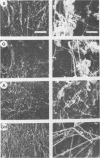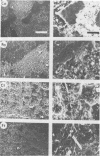Abstract
Metals exposed to rapidly flowing seawater are fouled by microbes that increase heat transfer resistance. In this study, results of biochemical test methods quantitatively relating the biomass and community structure of the microfouling film on aluminum and titanium to heat transfer resistance across the metal surface during three cycles of free fouling and manual brushing showed that cleaning accelerates the rate of fouling measured as the loss of heat transfer efficiency and as microfouling film biomass. The results also showed that the rate of fouling, measured as an increase in heat transfer resistance, is faster on titanium than on aluminum but that the titanium surface is more readily cleaned. In three cycles of free fouling and cleaning with a stiff-bristle nylon brush, the free-fouling communities re-forming on aluminum became enriched in bacteria containing short-branched fatty acids as the cycling progressed. The free-fouling community on titanium revealed an increasingly diverse morphology under scanning electron microscopy that was enriched in a portion of the microeucaryotes. Brushing removed most of the biomass, but left a residual community that was relatively enriched in a portion of the bacterial assembly containing cyclopropane fatty acids on aluminum and in a more diverse community on the titanium surface. The residual communities left after cleaning of titanium revealed an increase in bacteria with short-branched fatty acids and in microeucaryotes as cleaning continued. No significant changes occurred in the residual microbial community structure left on aluminum with cleaning; it was, again, less diverse than that remaining on titanium. The residual communities secreted a twofold-larger amount of extracellular polymer, measured as the ratio of total organic carbon to lipid phosphate, than did the free-fouling community on both surfaces.
Full text
PDF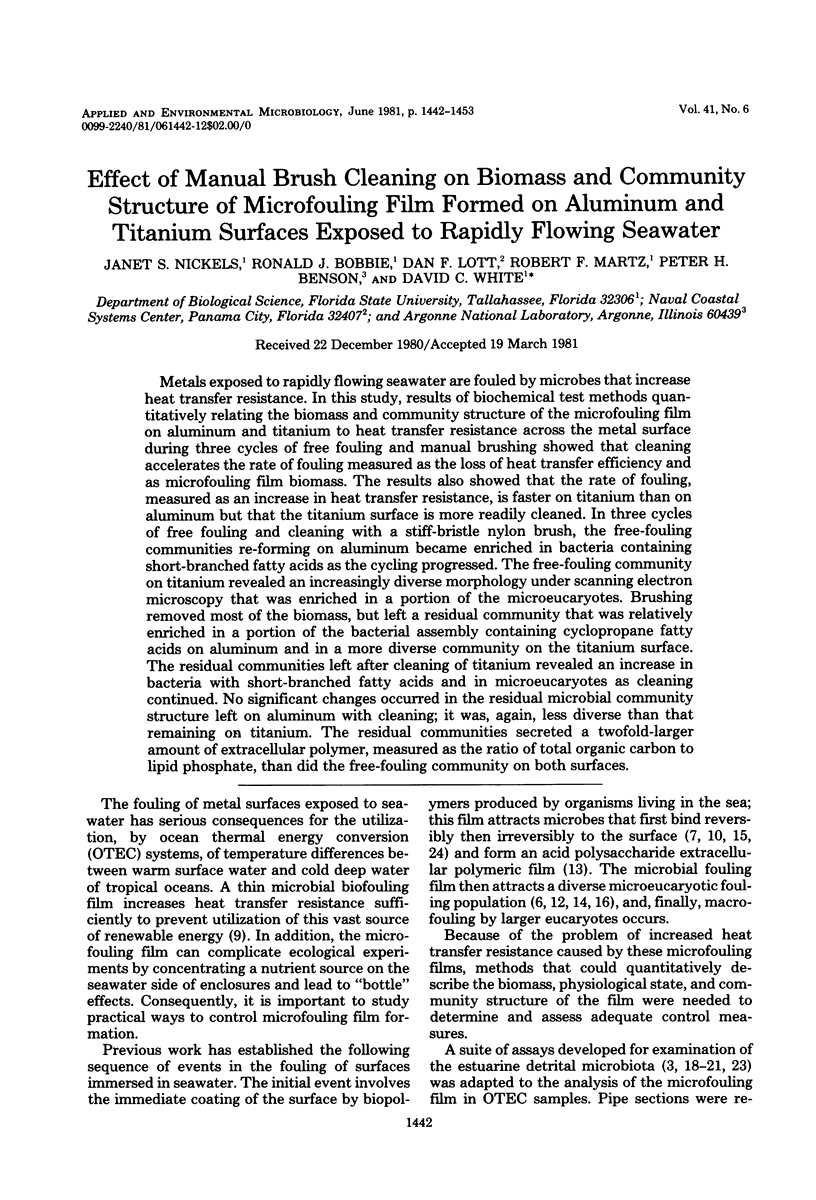
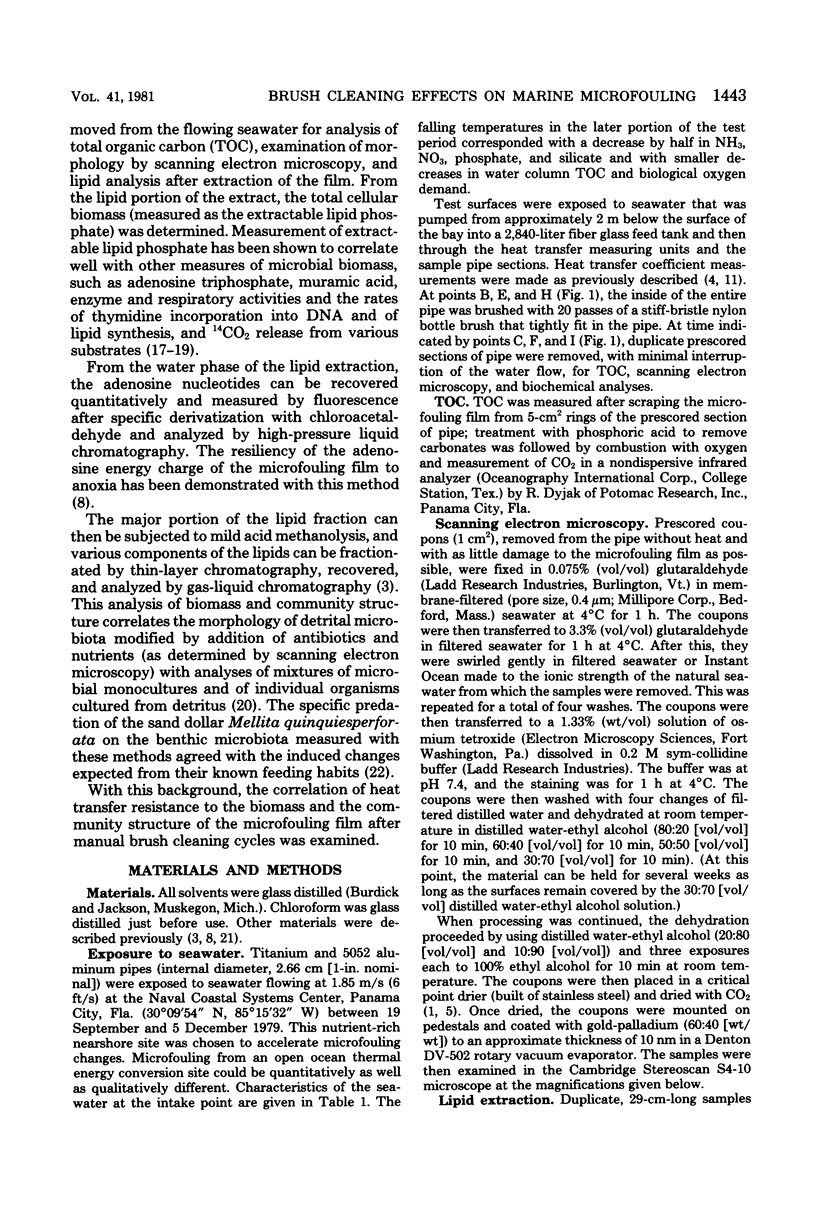
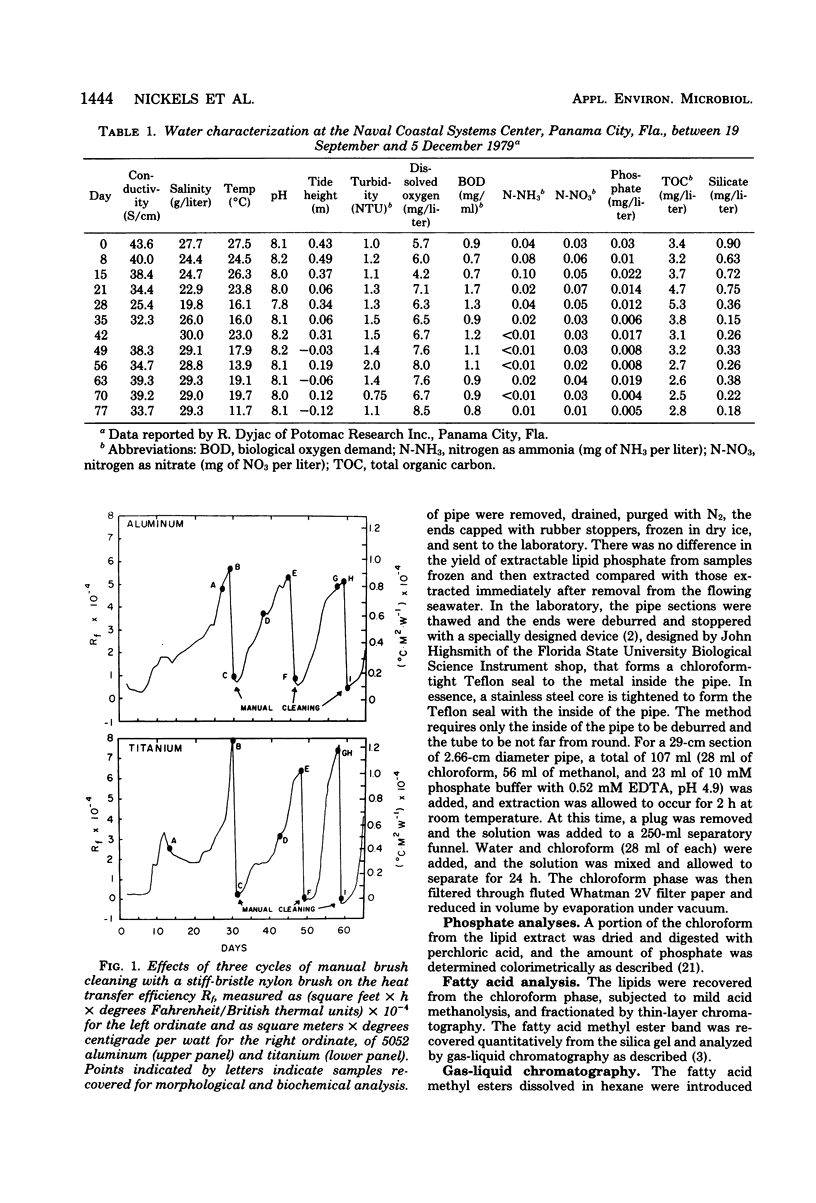
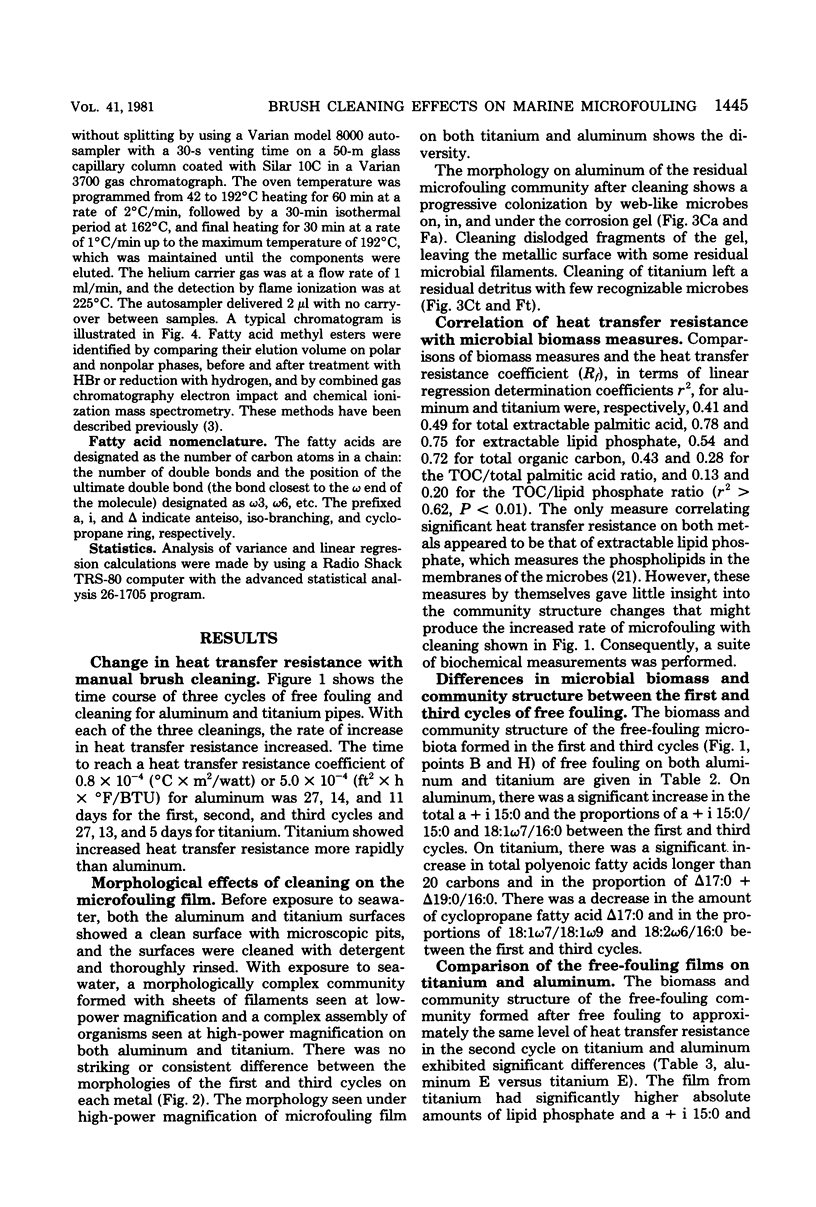
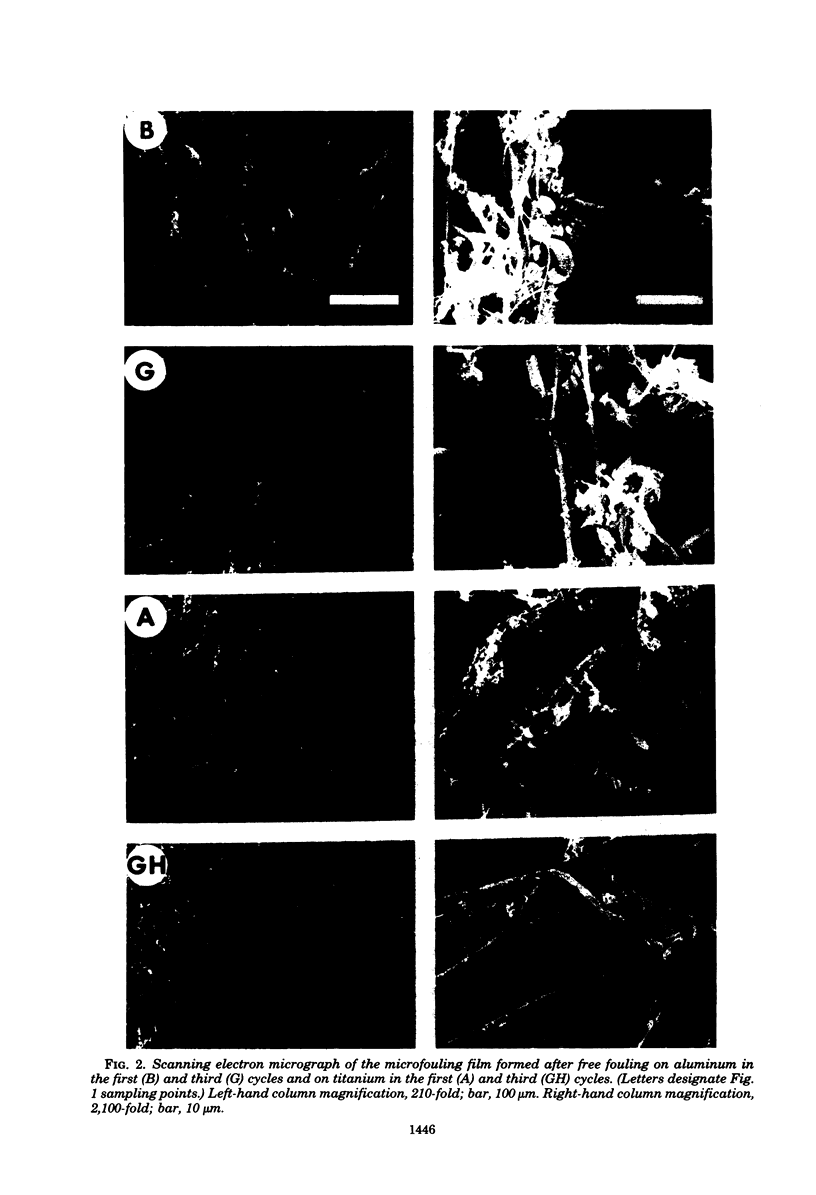
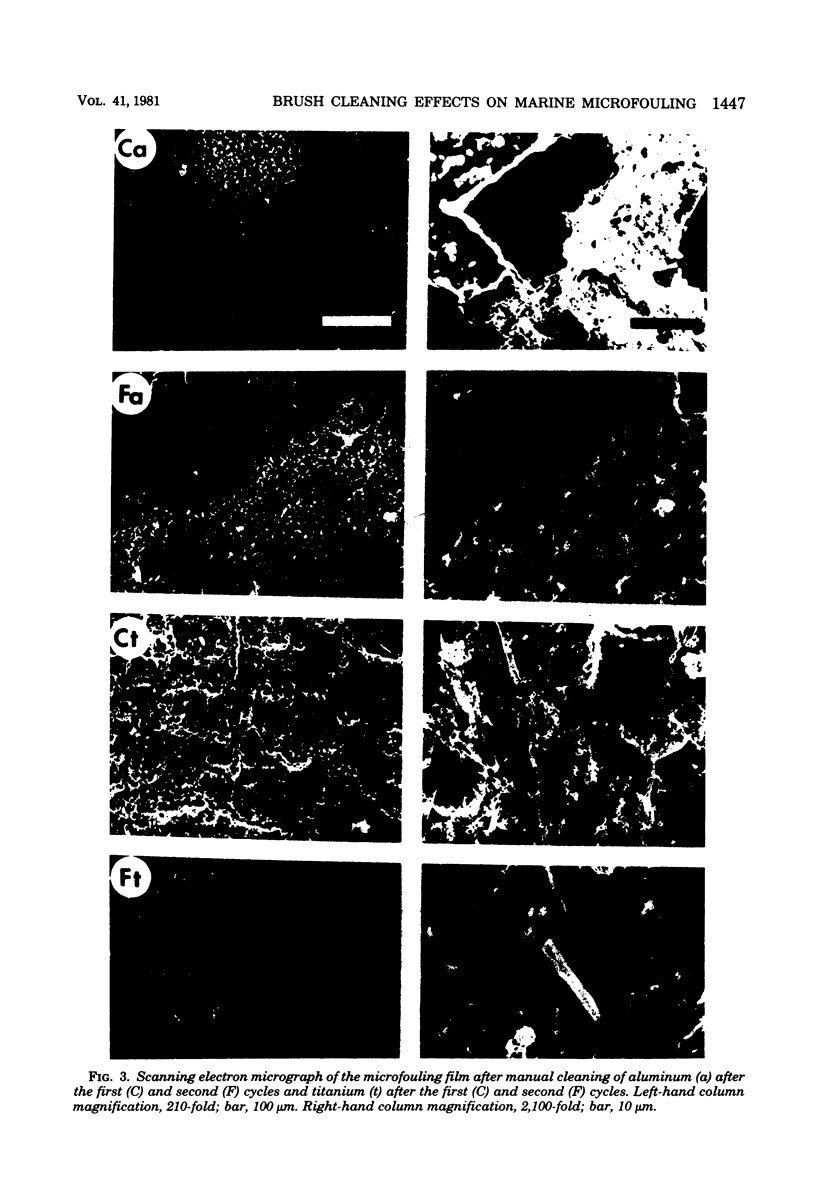
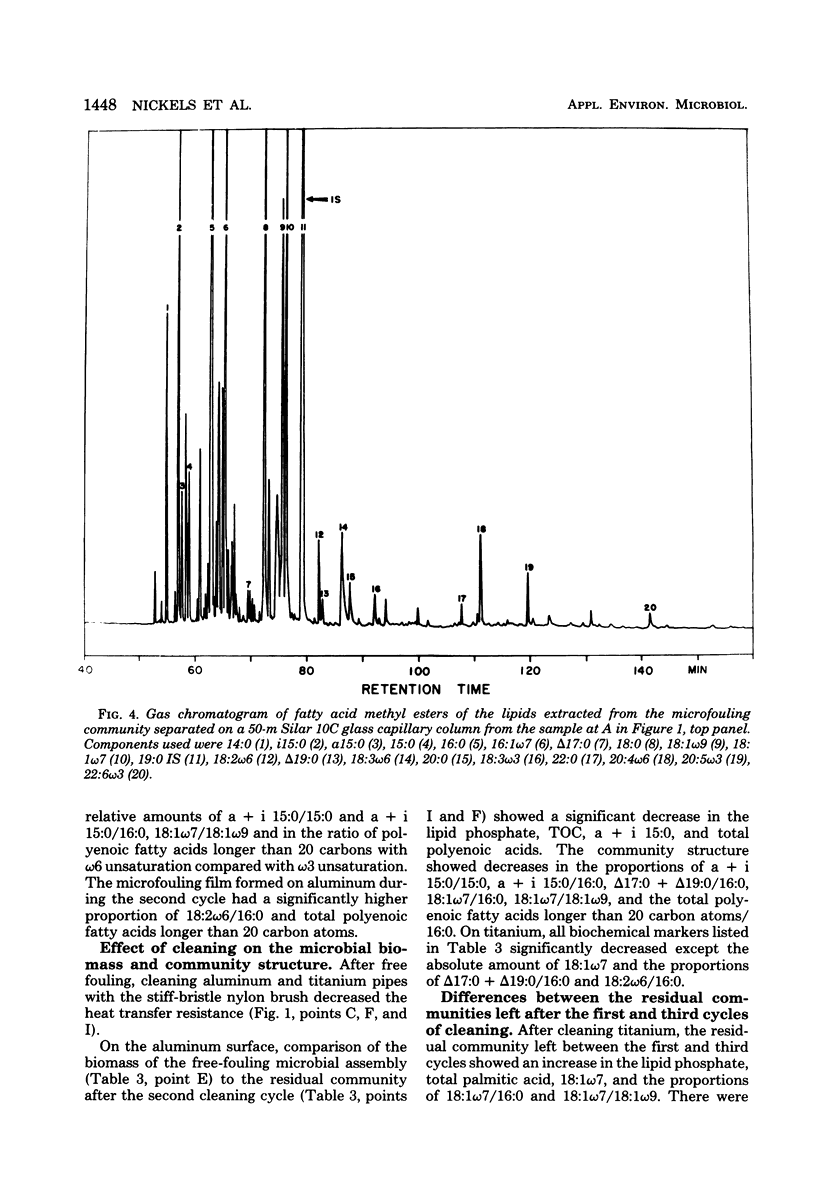
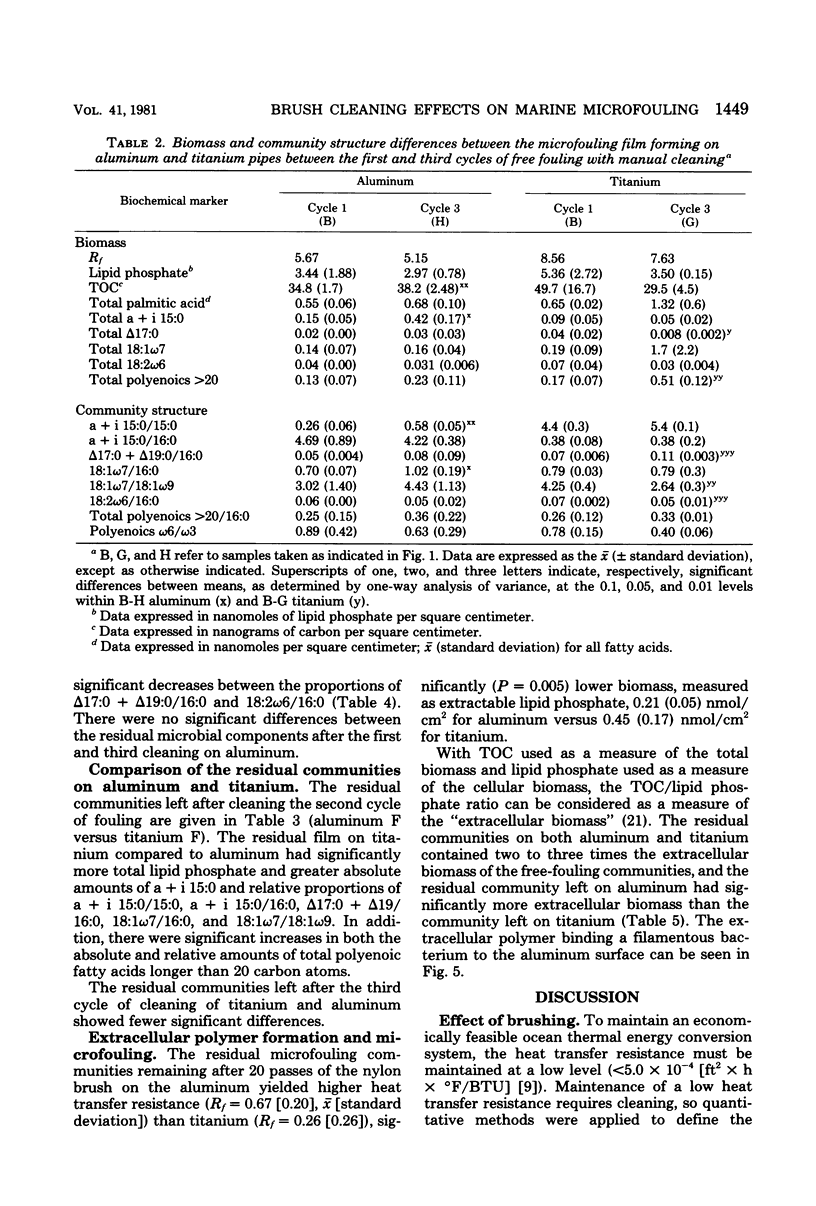
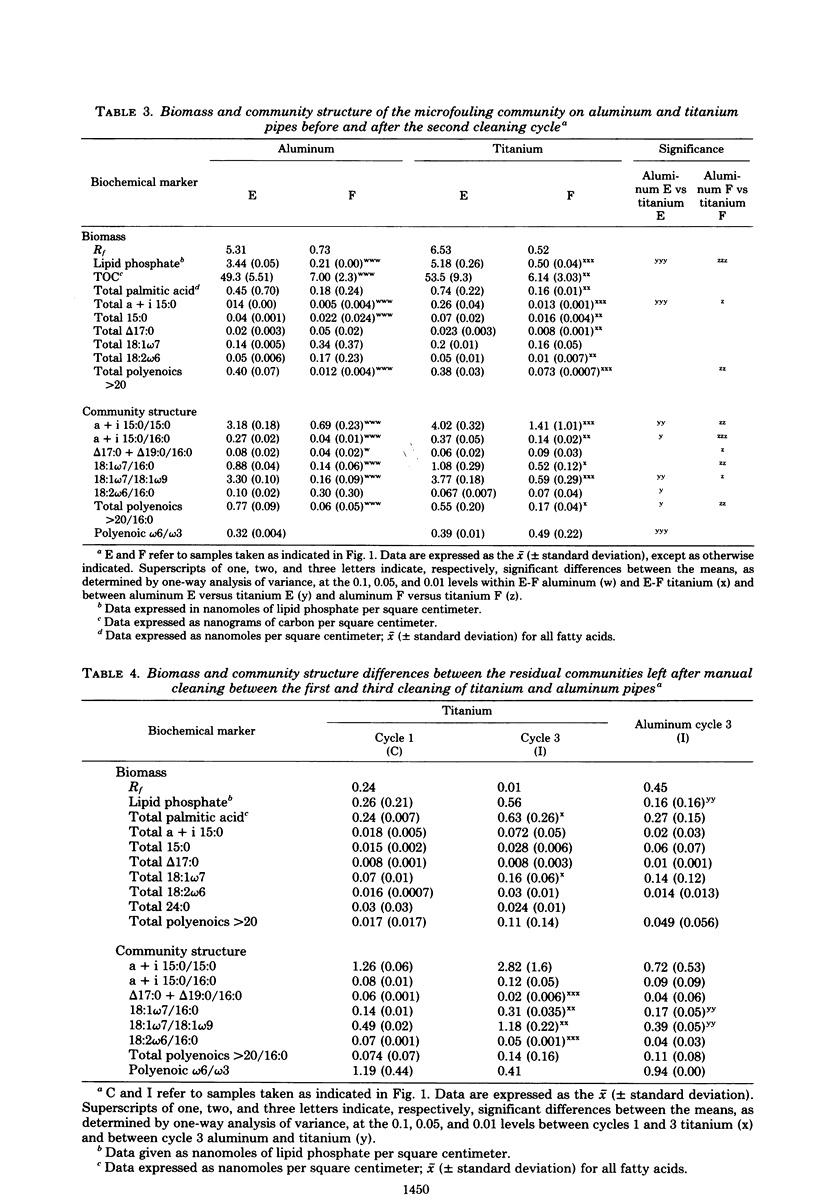
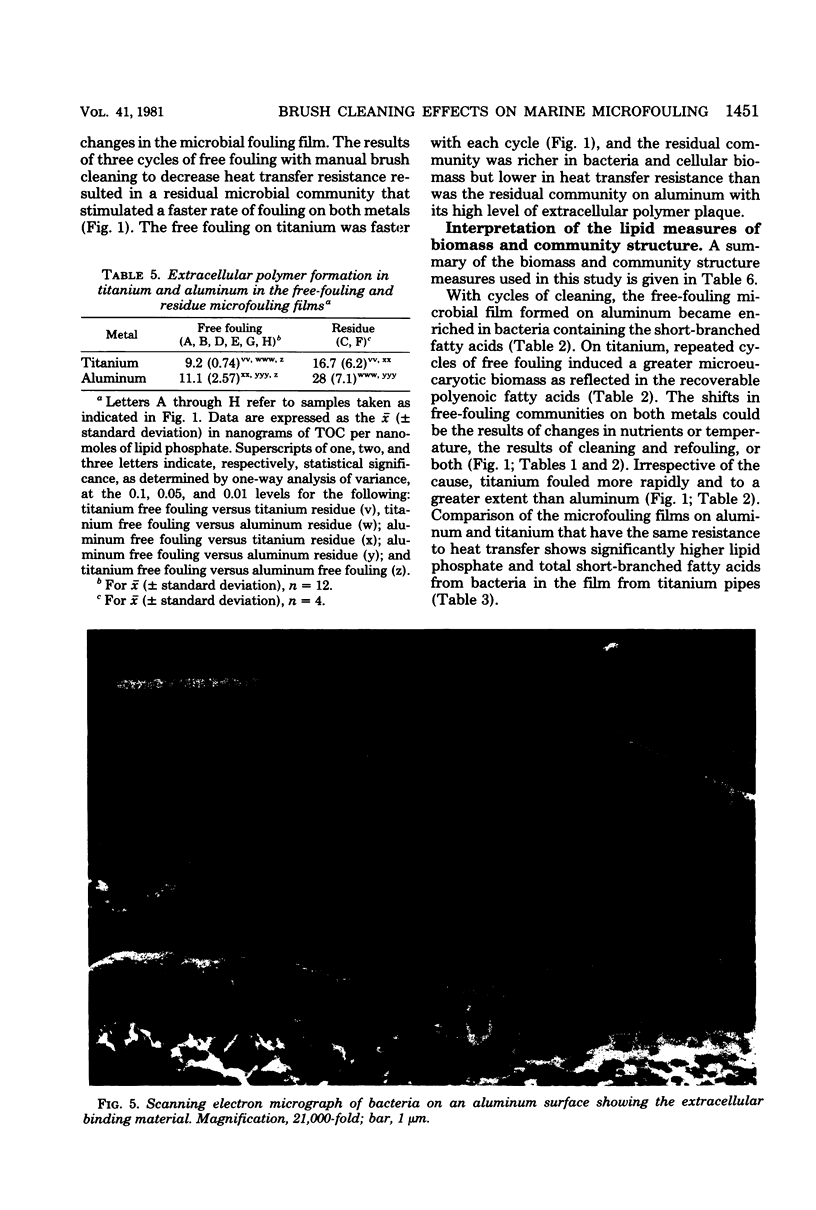
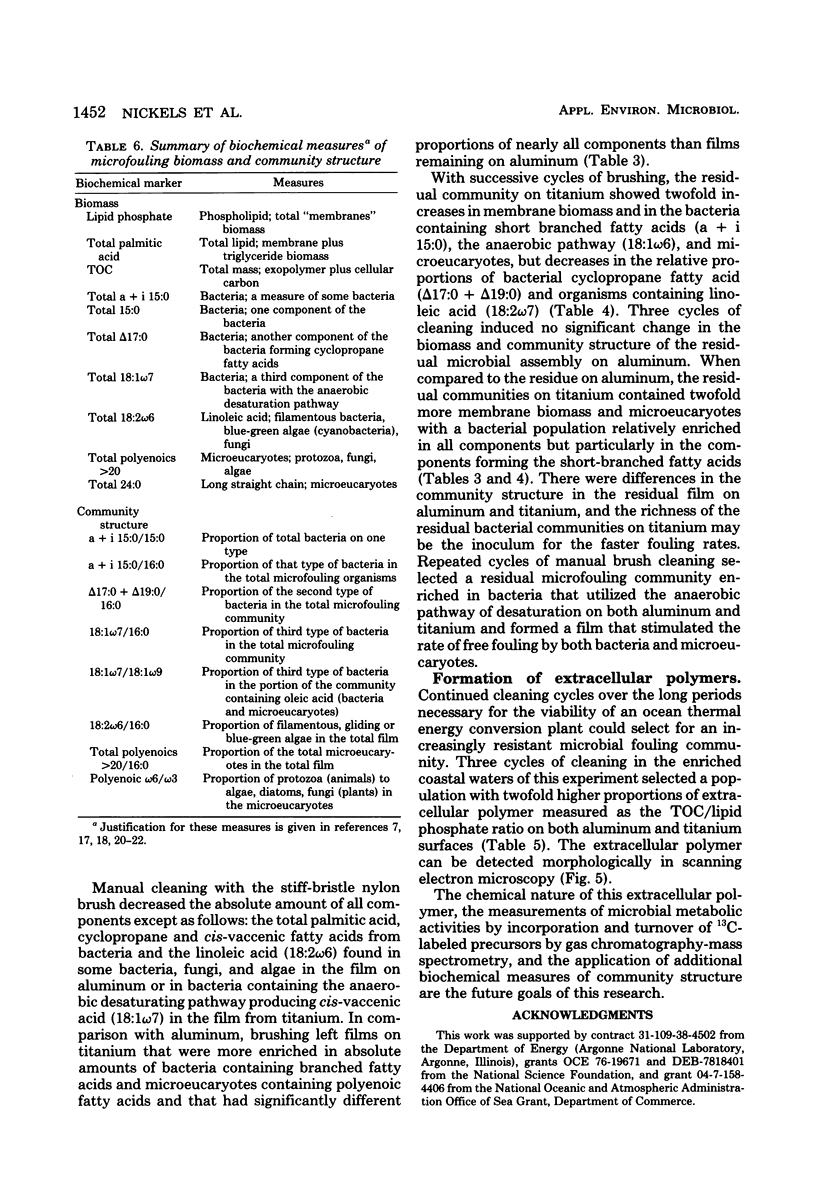
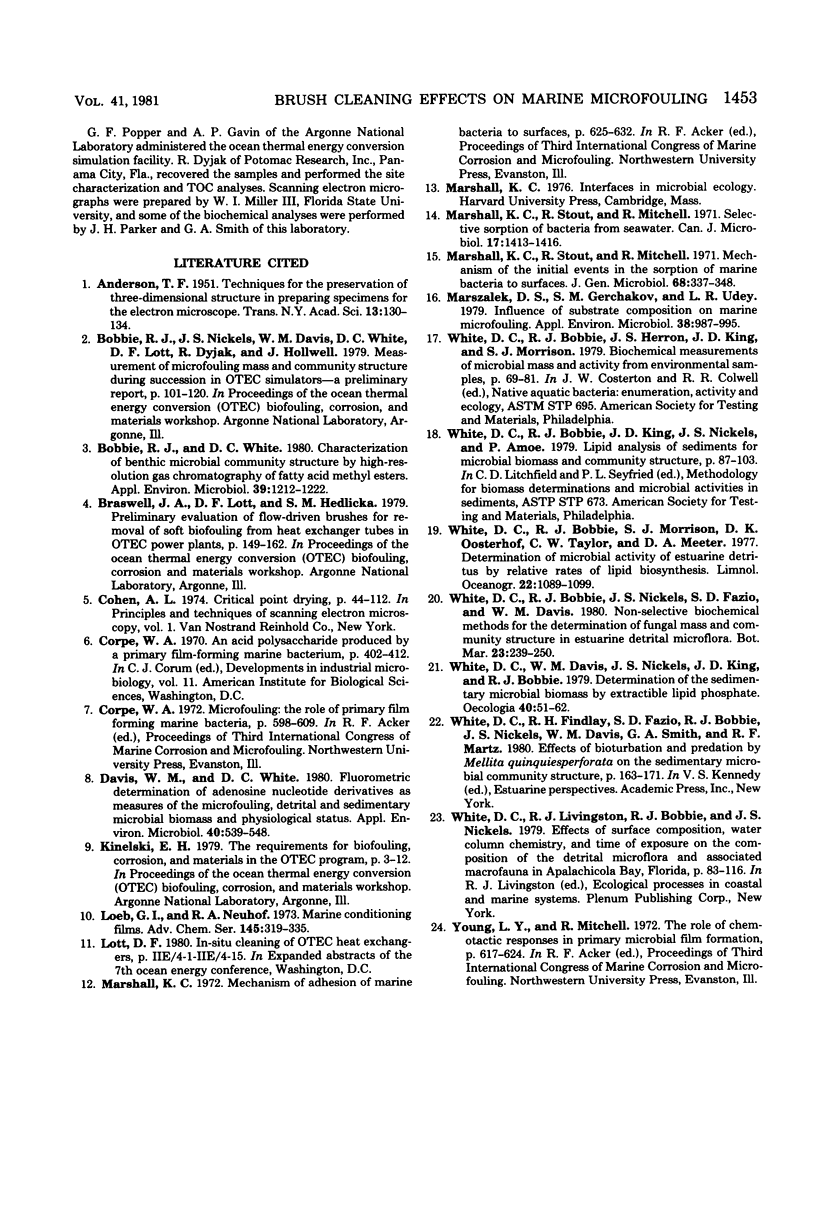
Images in this article
Selected References
These references are in PubMed. This may not be the complete list of references from this article.
- Bobbie R. J., White D. C. Characterization of benthic microbial community structure by high-resolution gas chromatography of Fatty Acid methyl esters. Appl Environ Microbiol. 1980 Jun;39(6):1212–1222. doi: 10.1128/aem.39.6.1212-1222.1980. [DOI] [PMC free article] [PubMed] [Google Scholar]
- Davis W. M., White D. C. Fluorometric determination of adenosine nucleotide derivatives as measures of the microfouling, detrital, and sedimentary microbial biomass and physiological status. Appl Environ Microbiol. 1980 Sep;40(3):539–548. doi: 10.1128/aem.40.3.539-548.1980. [DOI] [PMC free article] [PubMed] [Google Scholar]
- Marshall K. C., Stout R., Mitchell R. Selective sorption of bacteria from seawater. Can J Microbiol. 1971 Nov;17(11):1413–1416. doi: 10.1139/m71-225. [DOI] [PubMed] [Google Scholar]
- Marszalek D. S., Gerchakov S. M., Udey L. R. Influence of substrate composition on marine microfouling. Appl Environ Microbiol. 1979 Nov;38(5):987–995. doi: 10.1128/aem.38.5.987-995.1979. [DOI] [PMC free article] [PubMed] [Google Scholar]



